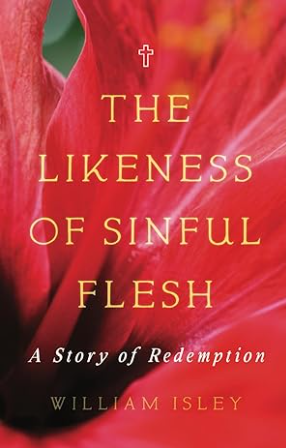Perhaps the one fact that is beyond dispute in the 2016 presidential election is that in historic numbers American voters are dissatisfied with both the Republican and Democratic candidates. One needs to ask how it is that two national organization with over 150 years of existence and consisting of professional politicians could do such an atrocious job. Paradoxically the answer is that there is a need for less and more party control.
More Control Needed
The Republicans demonstrate the need for political parties to exert more control over the choice of their nominees. This is clearly the case in the nomination of Donald Trump, the worst candidate in recent memory, possibly in the whole of American political history. The Republican leadership clearly saw the problem, but was unable to do anything about it because their own rules and lack of appointed at-large delegates meant that they could not keep Trump from winning the nomination. By the time of the convention it was for all intents and purposes impossible to choose someone else.
The Republicans’ dilemma is chiefly the result of the primary system. Five historical points relating to the manner in which presidential candidates have been chosen are illuminating.
- The Constitution does not specify the nominating process. Political parties, which were originally opposed by the Founding Fathers, developed their own systems of selecting candidates.
- Up to 1820 either congressional party members or state legislature party caucuses chose the candidates.
- In 1832 the national convention became the means to choose a party candidate. Interestingly, the pioneer in this was not a major political party but the Anti-Masonic Party, since they had no one in Congress. After this, delegates to the national convention were generally chosen at local party conventions
- The primary system is the result of the progressive political movement of the late 19th They believed that it would lessen corruption and give the people a greater voice in the choice of candidates. Progressivism desired, therefore, less party control of the nominating process. Up to 1968 only 12 states had presidential primaries. In the 2016 both parties held presidential primaries in 38 states.[1]
- The movement for binding primaries, in which delegates must vote in the first round of the convention for the candidate they were chosen to represent, started after the disastrous 1968 Democratic Party convention in Chicago.
The primary system has lessened the party’s control of the nominating process and made the national conventions into unity showcases rather than truly decision-making events. For example, the last truly contested conventions were in 1952.
The important question is whether the primary system has actually produced better candidates both in terms of electability and, more importantly, leadership quality. Most emphatically Donald Trump and quite likely Hilary Clinton demonstrate that it does not.
A major difficulty of any populist program is the requirement of gaining widespread popular recognition and support. The candidates need to capture the people’s attention and portray a positive image. This requirement has led to the markedly increased influence of the mass media in the nominating process. In the contemporary visual culture sham televised media events, such as the ridiculously misnamed debates, in which image and the one-liner drive out serious discussion of issues lead to the victory of a Donald Trump who is an experienced “celebrity.”
The primary system has also resulted in the rise of the pollster. States fight to maximize their influence by having their primaries and caucuses first. Currently, in February Iowa, New Hampshire, South Carolina, and Nevada have their nominating contests. If a candidate can win them or even do better than the polls say was expected, they build up momentum. The pollsters do their surveys, a candidate is declared to have the momentum, and, because people want to back a winner, they jump on the bandwagon, and the candidate can be well on his way to locking up the nomination. Clearly these states are not very representative of the nation as a whole, and so candidates are nominated who may not actually have broad popular support.
The last negative influence of the primary system is that it has extended the presidential races and greatly increased their cost. The extended races mean that politicians are spending far too much time running for office and too little time actually governing. Additionally, the hue and cry for campaign finance reform to rid the elections of influence groups and control by the wealthy often misses this point. Given the current primary system, it is almost impossible to finance a campaign without them. And do we really want our elections to be financed by the government? Remember that the government consists of Republican and Democratic party members who will seek to control the election process as much as possible for their party’s benefit.
Less Control Needed
It could be objected that the call for parties to exercise more control over their nominating process would limit voter options. Supporters of Bernie Sanders complained that the Democratic Party exercised an unjust control over the nominating process and wanted the party to change its rules.
However, this objection confuses controlling the party’s nominating process with the parties controlling the election process. There should be less control by the two major parties over the election process.
What is needed is to make it easier for parties other than the Republicans and Democrats to field candidates. If that were the case, both dissatisfied Democrats and Republicans could field their own candidates. The chief difficulties in decreasing party control over the election are issues concerned with ballot access and secondarily media access. Once again, a look at history will help clarify the problem.[2]
Before the days of computerized voting, a people marked their preference for a candidate on a piece of paper called a ballot. Prior to 1888 there were no ballot access laws and the government did not print ballots. Most ballots were prepared by the parties and people could use them, alter them or prepare their own ballots and vote for the candidates of their choice.
Progressive reformers felt that this unregulated voting system was too open to corruption. Their solution, based on their consistent belief in the justice and efficacy of government intervention, was to have the government print ballots. Incredibly and naively, they assumed that government was nonpartisan. As the years passed, Republican and Democrat-controlled legislatures have passed laws making it difficult for candidates of other parties or independents to be placed on the ballot.
Ballot restriction by the government; that is, by the two major parties, is accomplished in three ways: by requiring an excessively large number of signatures, by giving the government the power to verify those signatures, and by early filing deadlines. Only groups with extensive preparation and volunteer support or wealthy candidates, such as Ross Perot in the 1990’s, are able to mount a successful campaign to get on the ballot in all or even the majority of the states.
For example, in the 1860 election the Democratic Party split and there were two new parties formed in a matter of days that were able to win significant Electoral College votes. Current ballot laws would not allow such a wide range of options to voters and in effect limit voter choice.
Media access is related to the problem of the two major parties controlling the election. Despite their gross inadequacies as discussions of political issues, the televised presidential debates are probably the major source of one-time media access for candidates to the voters. The debates are run by the Commission on Presidential Debates (CPD). The CPD is said to be a non-partisan political organization. The truth is that it is a bipartisan organization sponsored by the Democratic and Republican Parties. It is to their interest to make it difficult for viable alternative candidates to participate in the nationally televised debates. The current requirement that a candidate have 15% support in the polls is a prime example of the system’s restrictive nature.
Frankly, under current conditions it seems impossible to liberalize ballot and media access. The two parties control both and have no interest in allowing other parties easier access.
The only possible scenario for change that I can see is for the collapse of one of the two parties. This happened with the collapse of the Federalist Party after the War of 1812. In 1820 the Democratic-Republican James Madison ran virtually unopposed. With only one effective party for the 1824 election there were four Democratic-Republicans who ran for president and the election had to be determined in the House of Representatives. As a result, the system of having congressional party members choose their party’s candidate was replaced by the system of national conventions.
If, for instance, the Republican Party disappeared, our knowledge of human nature tells us that the Democrats would begin to fight among themselves and new parties would emerge and current smaller parties such as the Libertarians and Greens would gain traction. Barring such a disaster, there is little hope for improvement in the near future.
[1] Both parties have a primary in Puerto Rico. The Democrats have primaries for Democrats living abroad and in the District of Columbia. The rest of the states and territories hold caucuses.
[2] I am indebted to Richard Winger’s articles on ballot access for this section. See http://web.archive.org/web/20071013214238/http://ballot-access.org:80/winger/essays.html

